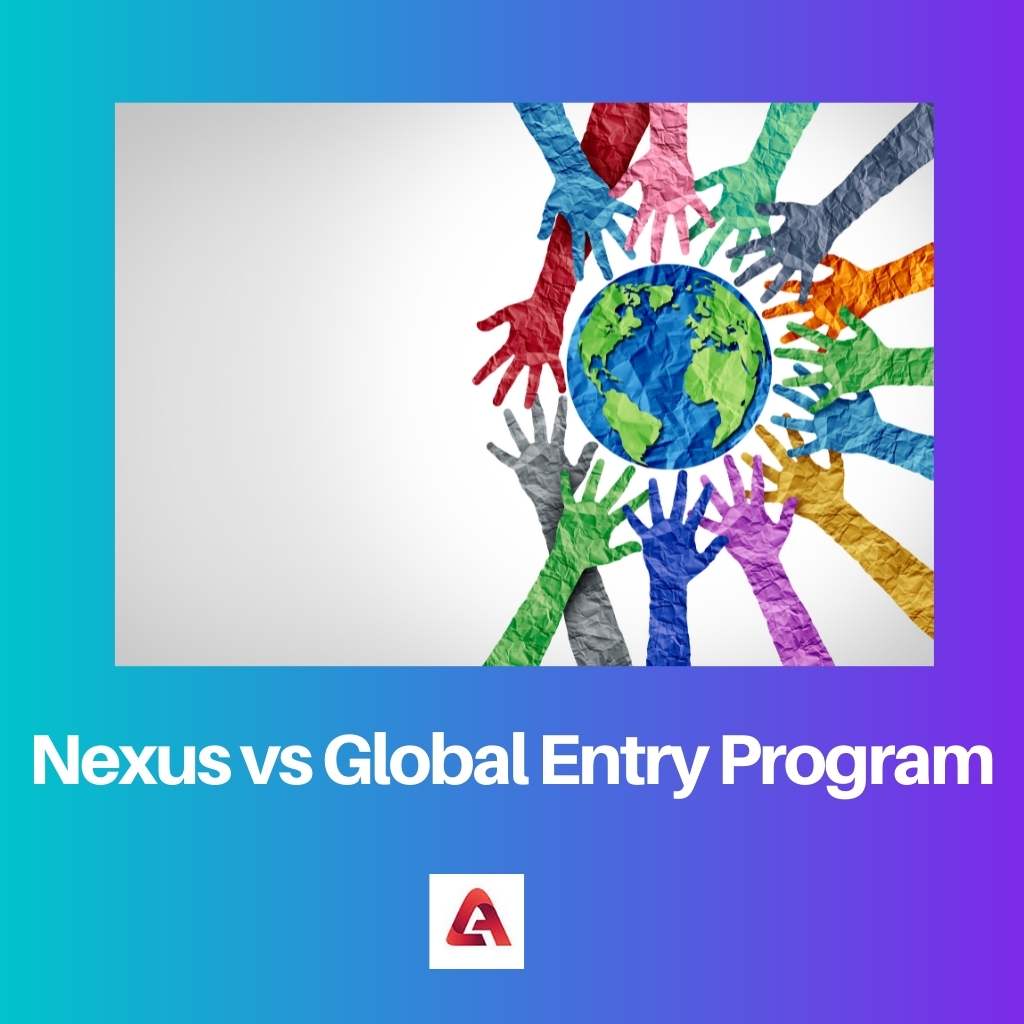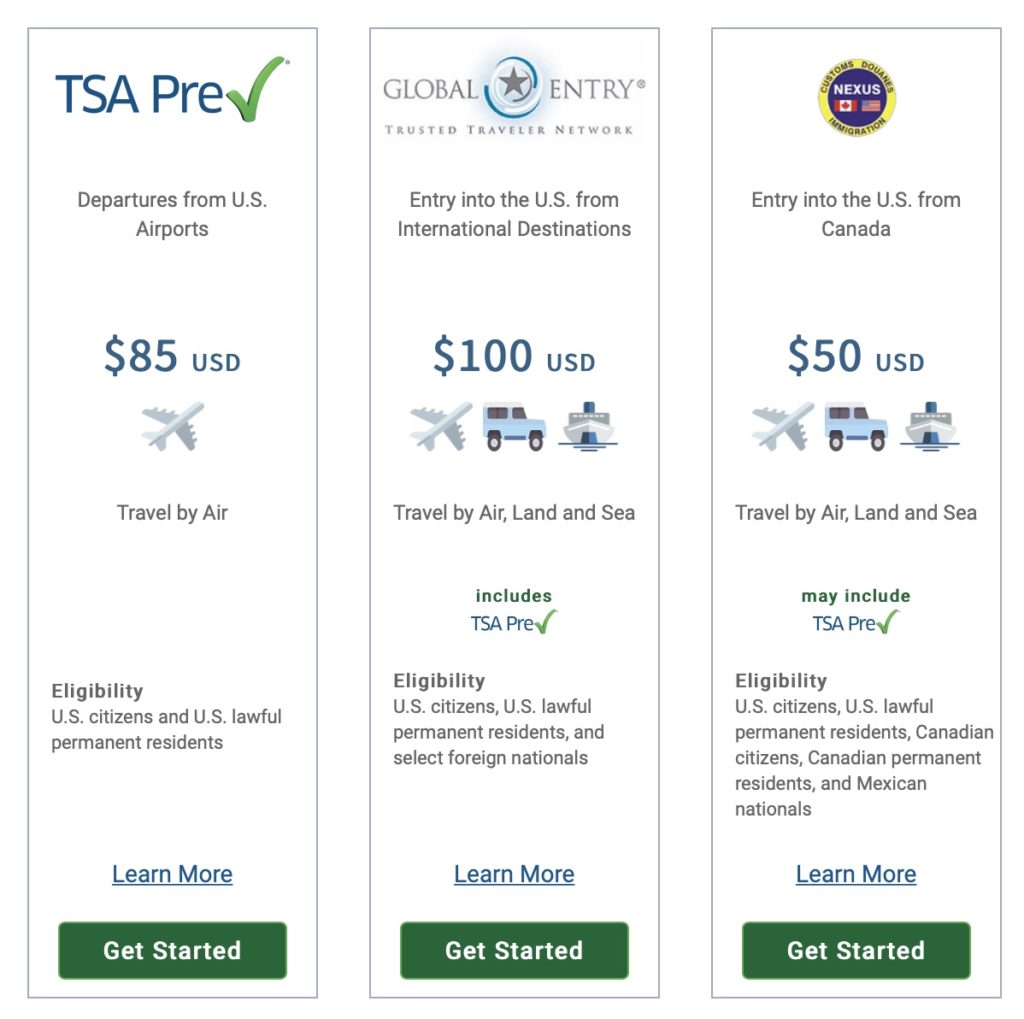What is Global Entry and How Does it Work?
Global Entry is a trusted traveler program designed to expedite the customs process for low-risk travelers entering the United States. The program, administered by U.S. Customs and Border Protection (CBP), allows pre-approved travelers to bypass traditional customs lines and use dedicated kiosks to complete their entry process. To be eligible for Global Entry, applicants must undergo a thorough background check, provide biographical and biometric information, and pay a non-refundable fee. Once approved, members can enjoy expedited customs processing for a period of five years, after which they must reapply for the program.
The Global Entry program offers numerous benefits to its members, including reduced wait times, increased security, and enhanced travel experiences. By using dedicated kiosks, travelers can quickly and efficiently complete their customs declarations, reducing the time spent in line. Additionally, Global Entry members are eligible for TSA PreCheck, which provides expedited security screening at participating airports. With Global Entry, travelers can enjoy a more streamlined and hassle-free travel experience, making it an attractive option for frequent international travelers.
While Global Entry is a popular program, it is not the only trusted traveler program available. Another program, Nexus, offers similar benefits to travelers crossing the border between the United States and Canada. However, there are key differences between the two programs, which will be discussed later in this article. For now, it is essential to understand the basics of Global Entry and how it works, as this knowledge will help inform the decision of whether to apply for this program or explore alternative options.
Nexus Program: A Closer Look at the Benefits and Requirements
The Nexus program is a trusted traveler program designed to expedite the customs process for low-risk travelers crossing the border between the United States and Canada. The program, administered by U.S. Customs and Border Protection (CBP) and the Canada Border Services Agency (CBSA), allows pre-approved travelers to use dedicated lanes and kiosks to complete their customs declarations. To be eligible for Nexus, applicants must undergo a thorough background check, provide biographical and biometric information, and pay a non-refundable fee.
One of the key benefits of the Nexus program is its ability to provide expedited customs processing for both land and air travel. Unlike Global Entry, which is primarily designed for international air travel, Nexus is geared towards travelers who frequently cross the U.S.-Canada border by land or air. Additionally, Nexus members are eligible for TSA PreCheck, which provides expedited security screening at participating airports. However, it’s essential to note that Nexus is not the same as Global Entry, and there are distinct differences between the two programs.
The application process for Nexus is similar to that of Global Entry, requiring applicants to submit an online application, provide required documents, and attend an interview at a designated enrollment center. However, the fees associated with Nexus are lower than those of Global Entry, making it a more affordable option for some travelers. Furthermore, Nexus members can enjoy a more streamlined travel experience, with reduced wait times and increased security.
While Nexus offers many benefits, it’s crucial to understand its limitations and differences compared to Global Entry. In the next section, we’ll provide a side-by-side comparison of the two programs, highlighting their fees, requirements, and benefits. This will help travelers make an informed decision about which program is best suited for their needs.
How to Choose Between Global Entry and Nexus: A Comparison Guide
When deciding between Global Entry and Nexus, it’s essential to consider several factors, including your travel habits, budget, and personal preferences. Both programs offer expedited customs processing, but they have distinct differences in terms of fees, requirements, and benefits. In this section, we’ll provide a side-by-side comparison of Global Entry and Nexus to help you make an informed decision.
Program Fees: Global Entry: $100 (5-year membership), Nexus: $50 (5-year membership)
Eligibility Requirements: Global Entry: U.S. citizens, nationals, and lawful permanent residents, Nexus: U.S. citizens, nationals, and lawful permanent residents, as well as Canadian citizens and permanent residents
Application Process: Global Entry: Online application, background check, and in-person interview, Nexus: Online application, background check, and in-person interview at a designated enrollment center
Benefits: Global Entry: Expedited customs processing, TSA PreCheck, and access to dedicated lanes, Nexus: Expedited customs processing, TSA PreCheck, and access to dedicated lanes, as well as enhanced security and reduced wait times
When considering which program is best for you, ask yourself: Do you frequently travel internationally by air, or do you cross the U.S.-Canada border by land or air? If you’re a frequent international air traveler, Global Entry might be the better choice. However, if you frequently cross the U.S.-Canada border, Nexus could be the more convenient option.
Ultimately, the decision between Global Entry and Nexus depends on your individual needs and preferences. By understanding the differences between these two programs, you can make an informed decision and choose the one that best fits your travel habits.
Is Nexus the Same as Global Entry? Understanding the Key Differences
One of the most common questions among travelers is whether Nexus is the same as Global Entry. While both programs offer expedited customs processing, they are not identical. In this section, we’ll delve into the key differences between Nexus and Global Entry, helping you understand which program is best suited for your travel needs.
The primary difference between Nexus and Global Entry lies in their scope and focus. Global Entry is a program designed for international air travelers, providing expedited customs processing at airports across the United States. Nexus, on the other hand, is a program specifically designed for travelers crossing the U.S.-Canada border by land or air.
Another significant difference between the two programs is their eligibility requirements. While both programs require applicants to undergo a background check and provide biographical and biometric information, Nexus has additional requirements for Canadian citizens and permanent residents. Furthermore, Nexus requires applicants to have a valid passport, enhanced driver’s license, or other accepted documents.
In terms of benefits, both programs offer expedited customs processing, TSA PreCheck, and access to dedicated lanes. However, Nexus provides additional benefits, such as enhanced security and reduced wait times, specifically designed for U.S.-Canada border crossings.
So, is Nexus the same as Global Entry? The answer is no. While both programs share similarities, they have distinct differences in terms of scope, focus, eligibility requirements, and benefits. Understanding these differences is crucial for travelers to make an informed decision about which program is best suited for their needs.
By recognizing the key differences between Nexus and Global Entry, travelers can choose the program that best fits their travel habits and preferences. Whether you’re a frequent international air traveler or a regular crosser of the U.S.-Canada border, selecting the right program can significantly enhance your travel experience.
How to Apply for Nexus or Global Entry: A Step-by-Step Guide
Applying for Nexus or Global Entry can seem like a daunting task, but with the right guidance, it can be a straightforward process. In this section, we’ll provide a step-by-step guide on how to apply for either program, including the necessary documents, fees, and interview process.
Step 1: Determine Which Program is Right for You
Before applying, it’s essential to determine which program is best suited for your travel needs. Consider your travel habits, budget, and personal preferences. If you’re a frequent international air traveler, Global Entry might be the better choice. However, if you frequently cross the U.S.-Canada border, Nexus could be the more convenient option.
Step 2: Gather Required Documents
Both Nexus and Global Entry require applicants to provide specific documents, including:
– A valid passport
– A birth certificate
– A government-issued ID
– Proof of residency
Step 3: Submit Your Application
Once you’ve gathered the necessary documents, submit your application online through the Trusted Traveler Programs (TTP) website. You’ll need to create an account and fill out the application form, which will ask for personal and biographical information.
Step 4: Pay the Application Fee
After submitting your application, you’ll need to pay the non-refundable application fee. The fee for Global Entry is $100, while the fee for Nexus is $50.
Step 5: Schedule an Interview
Once your application is processed, you’ll be scheduled for an interview at a designated enrollment center. During the interview, a CBP officer will ask you questions about your application and verify your documents.
Step 6: Receive Your Membership Card
After a successful interview, you’ll receive your membership card, which will be valid for five years. You can use your card to access dedicated lanes and kiosks at participating airports and border crossings.
By following these steps, you can successfully apply for Nexus or Global Entry and enjoy the benefits of expedited customs processing.
Maximizing Your Travel Experience with Trusted Traveler Programs
Trusted Traveler Programs, such as Nexus and Global Entry, offer a range of benefits that can significantly enhance your travel experience. By understanding how these programs work and how to use them effectively, you can save time, reduce stress, and enjoy a more streamlined travel experience.
One of the primary benefits of Trusted Traveler Programs is reduced wait times. With Nexus or Global Entry, you can use dedicated lanes and kiosks to complete your customs declarations, reducing the time spent in line. This can be especially beneficial for frequent travelers who value their time and want to minimize delays.
In addition to reduced wait times, Trusted Traveler Programs also offer increased security. By providing biographical and biometric information, you can help ensure that you are a low-risk traveler, which can lead to a more efficient and secure travel experience.
Another benefit of Trusted Traveler Programs is enhanced travel experiences. With Nexus or Global Entry, you can enjoy a more streamlined travel experience, with access to dedicated lanes and kiosks, as well as TSA PreCheck. This can make your travel experience more enjoyable and less stressful.
Furthermore, Trusted Traveler Programs can also provide additional benefits, such as access to airport lounges and priority boarding. These benefits can further enhance your travel experience and make your journey more enjoyable.
Overall, Trusted Traveler Programs offer a range of benefits that can significantly enhance your travel experience. By understanding how these programs work and how to use them effectively, you can save time, reduce stress, and enjoy a more streamlined travel experience.
Common Questions and Concerns About Nexus and Global Entry
As with any program, there are common questions and concerns that arise when considering Nexus and Global Entry. In this section, we’ll address some of the most frequently asked questions and provide clarity on the application process, eligibility, and benefits of each program.
Q: What are the eligibility requirements for Nexus and Global Entry?
A: Both programs require applicants to be U.S. citizens, nationals, or lawful permanent residents. Additionally, applicants must undergo a thorough background check and provide biographical and biometric information.
Q: How much do Nexus and Global Entry cost?
A: The application fee for Nexus is $50, while the application fee for Global Entry is $100. Both programs offer a five-year membership.
Q: What is the application process like for Nexus and Global Entry?
A: The application process for both programs involves submitting an online application, providing required documents, and attending an interview at a designated enrollment center.
Q: Can I use Nexus or Global Entry for domestic travel?
A: No, both programs are designed for international travel. However, Global Entry members are eligible for TSA PreCheck, which can be used for domestic travel.
Q: How long does it take to get approved for Nexus or Global Entry?
A: The approval process typically takes several weeks to several months. Once approved, members will receive a membership card that is valid for five years.
By addressing these common questions and concerns, we hope to provide clarity on the Nexus and Global Entry programs and help travelers make informed decisions about which program is best for their needs.
Conclusion: Simplifying Your Travel Experience with the Right Program
In conclusion, understanding the differences between Nexus and Global Entry is crucial for travelers who want to simplify their travel experience. By choosing the right program, travelers can enjoy reduced wait times, increased security, and enhanced travel experiences.
As we’ve discussed throughout this article, Nexus and Global Entry are two distinct programs with different benefits and requirements. While both programs offer expedited customs processing, they cater to different types of travelers. Nexus is designed for travelers who frequently cross the U.S.-Canada border, while Global Entry is geared towards international air travelers.
By understanding the key differences between Nexus and Global Entry, travelers can make informed decisions about which program is best for their needs. Whether you’re a frequent international air traveler or a regular crosser of the U.S.-Canada border, choosing the right program can significantly enhance your travel experience.
In summary, the main points of this article are:
– Nexus and Global Entry are two distinct programs with different benefits and requirements.
– Nexus is designed for travelers who frequently cross the U.S.-Canada border, while Global Entry is geared towards international air travelers.
– Understanding the key differences between Nexus and Global Entry is crucial for travelers who want to simplify their travel experience.
– By choosing the right program, travelers can enjoy reduced wait times, increased security, and enhanced travel experiences.
We hope this article has provided valuable insights and information to help you make an informed decision about which program is best for your travel needs.







